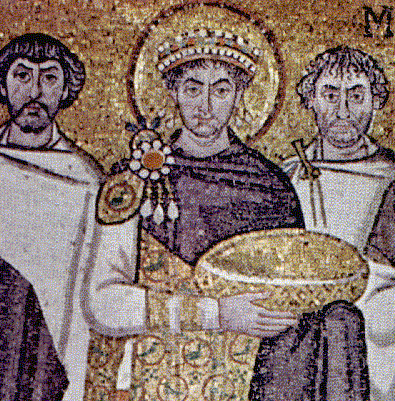
 | The Xenophile Historian |

Figure 15: Winged bull (cherubim) from the palace of Sargon II. Note how the artisans gave it five legs, to give the illusion of four legs when seen from either the front or the sides.

Figure 16: The Hanging Gardens of Babylon.

Figure 17: Persian archers, from a bas-relief at Susa.

Figure 18: Alexander the Great.

Figure 19: Sarcophagus of an Etruscan couple.

Figure 20: Famous bronze sculpture of Romulus and Remus. The she-wolf is an Etruscan work, made around 500 B.C.; the two infants were added by a Renaissance artist, 2,000 years later.

Figure 21: Hannibal in the Alps.

Figure 22: Julius Caesar.

Figure 23: Caesar Augustus.

Figure 24: Diocletian and Maximian. Note that they are wearing crowns and military-style outfits, instead of togas and wreaths; medieval fashions appeared long before the Empire fell. The quality of art was also declining; in this case the artist didnít even tell us which emperor was which.

Figure 25: Constantine I.

Figure 26: Theodosius I.

Figure 27: Justinian and two members of his court. From a church mosaic at Ravenna.

Figure 28: Charlemagne.
Support this site!